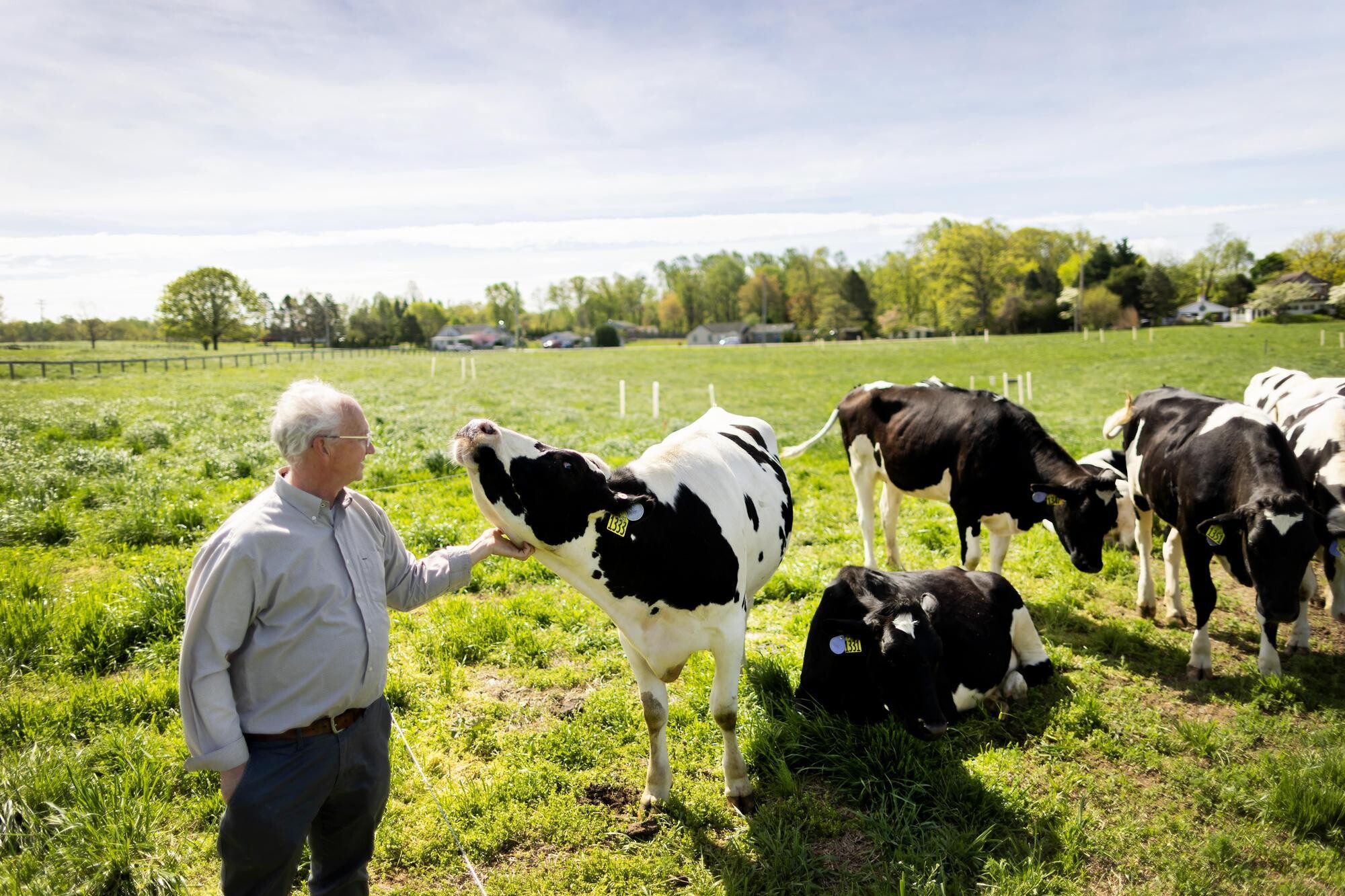
(From left) Doctoral student Hannah Yamagata, research assistant professor Kushol Gupta, and postdoctoral fellow Marshall Padilla holding 3D-printed models of nanoparticles.
(Image: Bella Ciervo)
4 min. read
Agriculture is a key sector of the U.S. economy, generating over $1 trillion annually and supporting millions of jobs. It’s also one of the country’s largest land uses; according to the U.S.D.A., about 17% of U.S. land is dedicated to agricultural activity.
Yet conventional agricultural practices, such as monocropping, synthetic fertilizers, pesticides, and intensive tillage pose environmental challenges. Poorly managed croplands, for example, can compromise adjoining and downstream waterways through soil erosion and nutrient runoff. In Pennsylvania alone, the Environmental Protection Agency has identified over 8,000 miles of streams impaired by agricultural activities.
One promising solution? Agroforestry—a land management system that integrates trees with crops or pastures. Penn researchers from the School of Veterinary Medicine and Weitzman School of Design are applying this approach at New Bolton Center (NBC) to explore the intersection of animal agriculture and the natural environment.
Agroforestry requires “a longer view,” says Elliot Bullen, a research associate and project manager at PennPraxis, which is led by Ellen Neises, who serves as an adviser for the work. Bullen spearheaded the multiyear initiative that focuses on two key practices of agroforestry: riparian buffers and silvopasture—the deliberate integration of trees and shrubs with grazing livestock on the same land.
The team began in January 2024 with the planting of 250 trees along the headwaters of White Clay Creek to start the establishment of a riparian buffer.
“Planting trees along waterways offers several advantages: their roots shore up the soil along the edge of the stream and prevent erosion,” says Penn Vet’s Thomas Parsons, principal investigator and director of the school’s Center for Stewardship Agriculture and Food Security. “But you can also imagine a scenario, particularly around farmland, where there are excess nutrients, such as phosphorus and nitrogen, that might run off into the stream; these additional plants then act as a buffer to help absorb them.” Ultimately, the canopy will shade the water, helping to stabilize its temperature and improve stream health.
One issue, however, is that these buffer zones need to be wide—at least 35 feet, and ideally closer to 100 on either side of the stream—leading to a reduction in usable pasture or cropland. One solution is a “working” riparian buffer with vegetation that provides economic value.
“People might plant blackberry bushes or mulberry bushes—something that could be harvested—or trees that they could ultimately harvest for lumber,” says Parsons. “But this requires labor to actually realize the benefit.”
Their innovative answer? Let the animals do the work.
“We are putting in fodder blocks—trees and shrubs that the animals can eat,” says Parsons, adding that this working buffer extends the conventional riparian buffer.
They have begun implementing the silvopasture on the hillier pasture beyond the working buffer.
“There is a transition from the densely planted native riparian forest to the shrubby zone managed periodically by the animals and then to the silvopasture,” says Bullen. “It’s more of a savannah with more open pasture and strategically placed larger trees.” The trees will eventually provide food for the livestock and shade benefiting the cows and the pasture grasses.
This summer marked the first year the cows were introduced to the agroforestry system, with rotational grazing. As the shrubs and trees mature, the grazing management will become more intensive to test different agroforestry attributes across the 16 experimental paddocks.
This fall, Parsons plans to explore options for equipping the heifers with GPS devices and possibly GoPro cameras in anticipation of tracking their preferences for pasture slope as well as shrub and tree species and configuration—density and position within the paddock—in the years to come.
“We are interested in animal behavior,” says Parsons. “We want the animals to tell us what is most advantageous to them.”

The team is also studying the impacts of agroforestry on the biodiversity of animals and plants, water quality, and soil health.
They see the site as a hub for multidisciplinary collaboration. Already, students from Alain Plante’s classes have collected baseline soil data, and Bullen and Parsons hope to bring more students—and eventually farmers—to the site to demonstrate practical applications for underutilized land.
“This site lends itself really well to being a site of demonstration,” says Bullen. “Farmers can see a whole range of options and think about their space and be like, ‘Okay, I can see this arrangement working well for this part of my farm, or that wouldn’t work, but this could work.’”
Ultimately the project is a pilot for a broader initiative.
A major objective for the new Center for Stewardship Agriculture and Food Security is to facilitate cross-school collaboration on agriculture. The agroforestry project, Parsons notes, demonstrates the potential for the New Bolton Center campus to serve as a hub for interdisciplinary teaching and research activities.
“We’re trying to promote NBC as a living laboratory to study the interface of animal agriculture and the natural world,” says Parsons.


(From left) Doctoral student Hannah Yamagata, research assistant professor Kushol Gupta, and postdoctoral fellow Marshall Padilla holding 3D-printed models of nanoparticles.
(Image: Bella Ciervo)

Jin Liu, Penn’s newest economics faculty member, specializes in international trade.
nocred

nocred

nocred